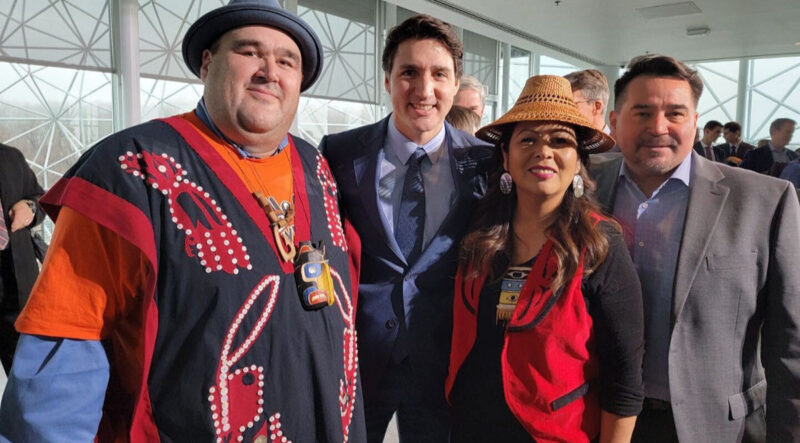Canada’s salmon farmers need more collaboration not conflict
While the rest of the world is increasing aquaculture production, campaigners with varying self-interests have been determined to shut down salmon farms in Canada.
Commentary By
Ned Bell, chef and sustainable seafood educator; Stefanie Colombo, professor at Dalhousie University; David Dzisiak, chief operating officer of Botaneco; Larry Johnson, co-chair of the Canadian Aquaculture Industry Alliance Indigenous Partners Network; Ian Roberts, chair of the Canadian Aquaculture Industry Alliance; Mary Robinson, president of the Canadian Federation of Agriculture and Dallas Smith, spokesman for the Coalition of First Nations for Finfish Stewardship.
Salmon is now the most popular seafood choice for North Americans, and much of it is aquaculture-sourced. It is also one of the lowest carbon-footprint proteins available. Salmon farmers have been listed in major international sustainability indexes as the most sustainable large-scale animal protein producers in the world. One independent Index, the British-based Coller FAIRR index, in November of 2022 listed salmon farmers as seven of the top 10 most sustainable, with two companies operating in Canada rated as first and second in the world.
But while the rest of the world is increasing aquaculture production, for the past 20 years, campaigners with varying self-interests have been determined to shut down aquaculture in Canada. Some campaigners operate on zero-sum outcome approaches: demand extreme and idealistic performance, such as no impact whatsoever to the environment – which is impossible in human affairs – or else shut down the economic activity.
Unfortunately, governments have been responding to these voices. As just one example, recent federal and provincial decisions are threatening to shut down 20,000 tonnes of salmon farming production in B.C. – historical peak production in the province is about 80,000 tonnes – that would result in a sharp drop in salmon available to Canadian consumers and for exports to the U.S. market. This is the equivalent of 120 million salmon meals. This production will be replaced largely by Chilean and Norwegian salmon farming production. This has major
negative implications for carbon emissions.
A simple and conservative calculation of air-freight carbon emissions that would be produced by replacing B.C. farm-raised salmon with Chilean and Norwegian salmon equals more than 160,000 tonnes. That’s the equivalent of 35,000 more cars on the road.
These are negative and unconsidered consequences of actions not based on peer-reviewed science, that threaten rare and valuable jobs in coastal and Indigenous communities, increase the cost of salmon for consumers, and do not consider the full sustainability picture. These actions would reduce the supply of fresh and healthy salmon produced with the most sustainable methods in the world; this at a time when the World Health Organization and Canada’s Food Guide recommend eating more fish to address Canadian diets that are deficient in critical oils and fatty acids – plentiful in farm-raised salmon – that help reduce heart disease and support proper infant neurological development.
What we need instead – and what will have an actual positive impact – is smart collaboration dedicated to making our salmon production systems ever better. We need environmental groups willing to push but also work with industry and engaged First Nations to improve performance, while maintaining an eye on the full sustainability and global carbon picture.
In December 2022, Canada’s salmon aquaculture sector released its sustainability commitments to Canadians, with support from Agriculture and Agri-Food Canada, to demonstrate its commitment to constant improvement. An external advisory committee of experts, including scientists, food experts, Indigenous leaders, retailers, and some signatories to this article provided feedback and guidance. Other food sectors have undertaken similar commitment exercises.
This is the necessary pathway forward: collaborative and incremental improvement for Canadian salmon farming production, and one that is socially, economically, and environmentally sustainable.
Salmon farming can be part of the answer to meeting Canada’s ambitious goals on other fronts – such as employment opportunities, improved human health and prosperity, and reducing carbon emissions. It is time to put our collective efforts together to grow more food more smartly in Canada, not less.
(This op-ed was originally published in the Globe and Mail)
L to R – Image shows Nanwakolas Council President Dallas Smith, Prime Minister Justin Trudeau, Coastal First Nations CEO Christine Smith-Martin, and Nanwakolas Council Executive Director Merv Child (Coastal First Nations photo).


Comments are closed.